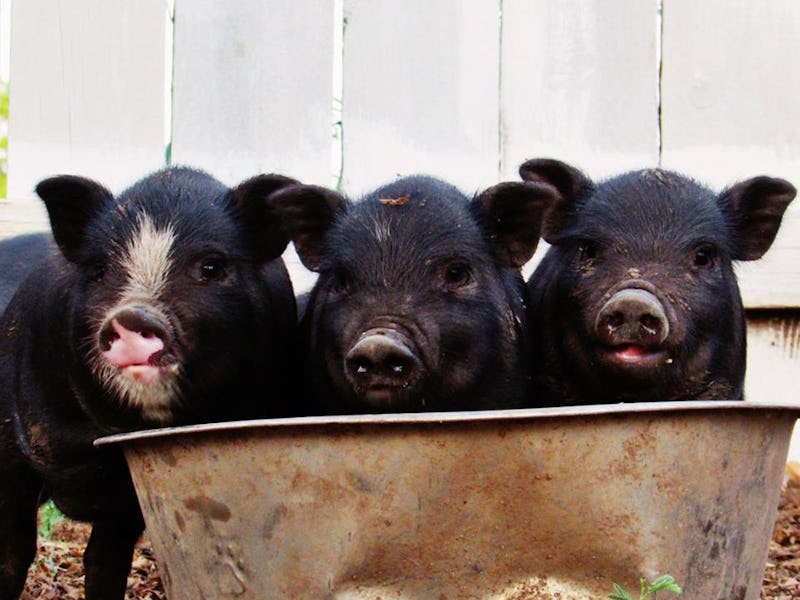Brains From Decapitated Pigs Kept Alive Outside Body for Up to 36 Hours
A deeply weird experiment could change the definition of death.

There are two ways to determine whether a person is legally dead in America. Either their circulatory and respiratory systems cease to function, or all the functions of their brain and brainstem stop. The latter, known as brain death, is hard enough to assess as is, since unconscious-but-still-living states, like coma, put the brain’s status in a strange grey area. Complicating the matter, Yale University scientists have just extended the boundaries of that liminal space, announcing that they’ve managed to keep the brains of decapitated pigs alive outside the body for up to 36 hours.
They made their announcement at the end of March at a meeting of the National Institutes of Health, according to a report by MIT Technology Review published on Thursday. The team, led by Yale University neuroscientist Nenad Sestan, Ph.D., used the brains of 100 to 200 pig brains from a slaughterhouse in their experiments. Physically severed from the pigs that once owned them, these brains, in theory, should be dead, lacking the flowing blood and body warmth they need to stay alive and functioning. But it turns out that they were only sort-of dead.
Using an array of pumps, heaters, and bags of artificial blood, the team managed to restore circulation to the pig brains, which in turn appeared to restore function to the individual cells of the brain. Billions of the neurons were, according to MIT Technology Review, “healthy and capable of normal activity.” Some cells likely died as a result of collateral damage, so the brains were not perfectly preserved — it’s not clear how long the pigs had been dead before the brains were used in the experiment — but on the whole the function of the neurons was described by Sestan as “mind-boggling” and “unexpected.”
Neurons in the brain can remain active after the organism dies. Whether that means the brain can regain consciousness remains a mystery.
Whether this constitutes being “alive” depends on how you define death and whether you’re looking at death on the level of the cell, the organ, or the individual. The neurons in this experiment were clearly alive, and so, if all of those neurons make up the brain, then the brain, too, must be alive, in some sense. That’s the idea behind organ transplants: Fresh from a just-deceased body, the cells in a liver, kidney, or heart don’t die immediately, and proper preservation can keep them alive long enough to transplant them into another body. Sestan’s team did pretty much the same thing, only for the brain, which is a significantly more complicated organ because we believe that it’s the seat of consciousness. If a brain must be conscious to be “alive,” then Sestan’s brains are somewhere between life and death, since the MIT Technology Review reports there “was no evidence that the disembodied pig brains regained consciousness.”
Whether consciousness can be restored to a dead brain remains a subject of biological, ethical, and philosophical debate. When it comes down to it, nobody knows whether a conscious brain is merely the sum of all its working parts; if that’s all it is, then Sestan’s pig brains could in theory regain consciousness if the team figures out how to preserve the organs with zero damage. More cavalier scientists have already attempted to find the answer to this question using human brains: In 2016, the Reanima Project began in India, seeking to reverse brain death in 20 brain-dead humans using neuroregenerative techniques meant to stimulate the brain stem. That project appeared to have been shut down several months later, however, perhaps reflecting how unprepared humans are to probe the nature of personhood.
Just this week, scientists debated the ethics of experimenting on human brain tissue in a commentary in the journal Nature, responding in part to recent studies involving mini human brain “organoids” being incubated within the living brains of other animals, like rats and pigs. The greatest concerns — and the greatest possibilities — are tied up with consciousness, more specifically, whether scientists actually have the power to create and control it. We don’t have the answers yet, but what studies like Yale’s pig brain experiment suggest is that we are steadily edging closer to a scenario where we will find them, however uneasy we become in the process.